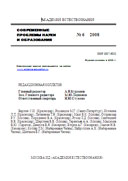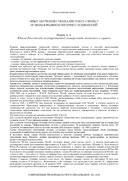PDF-версия статьи


|
Any language influences another language always due to the historical fact: wars, conquests, voyages, trade and so on bring language to a more close contact. Borrowings intensiveness is different in different periods. It may increase or decrease in a certain historical periods. Language factors is the major argument when one speaks about influence of one language on another. It depends on the fact if the language are closelyrelated or not.
The sours of borrowing is not the only interest of the nowadays, they are also interested in the words’ assimilation, what grammatical and phonetic changes it has undergone, how it changed its meaning and particularly what stylistic changes followed its appearance in the borrowing language.
According to the greatest Russian linguist A.A. Potebnya there is no difference from which language a word was borrowed but what changed, what was created as a result of activity, induced by corresponding impulse in the process of borrowing a word from the other nation. But his opinion didn’t meet recognition.
References:
1. Norman Moss British – American Language Dictionary. Passport Book, Lincolnwood, Illinois USA. 1984
2. Celse – Murcia M., ed. (1995). Teaching English as the second or foreign language. Heinle & Heinle Publishers, Boston, Massachusetts.
3. Emerson, Ralph Waldo (2006), The Classics of Style: The Fundamentals of Language Style from our American Craftsmen, the 1st ed., The American Academic Press.
4. A.A. Potebnya «Теоретическая поэтика»— М.: Правда, 1989
ОПУБЛИКОВАНО
Shokhakhov I.S., Togusbayeva M.S., Yemkulova Z.A., Berdauletova Sh.Zh., Abubakirova Zh.D. Stylistic Characteristic of French Borrowings in English Language. // Современные проблемы науки и образования - 2014.-№6. (приложение "Филологические науки"). - C. 9